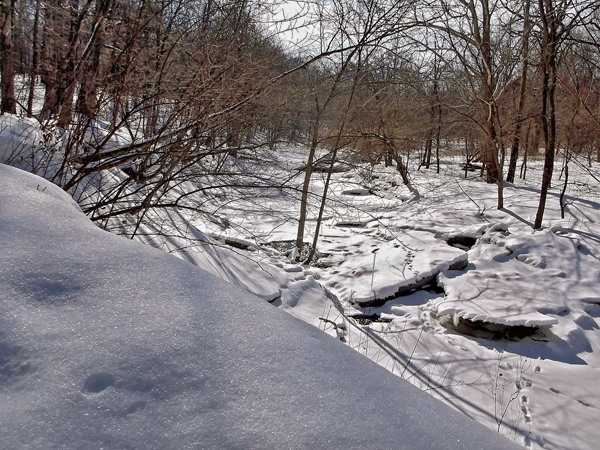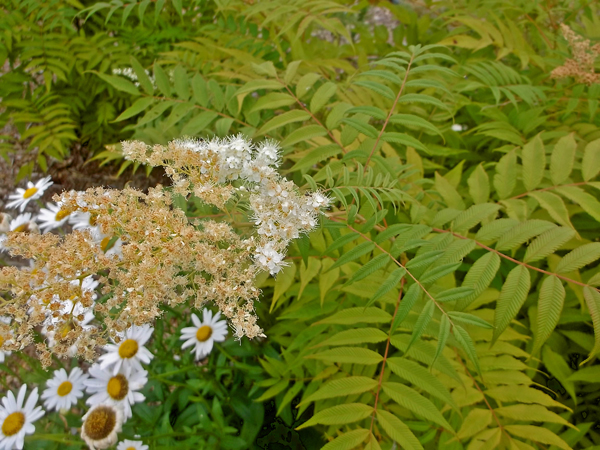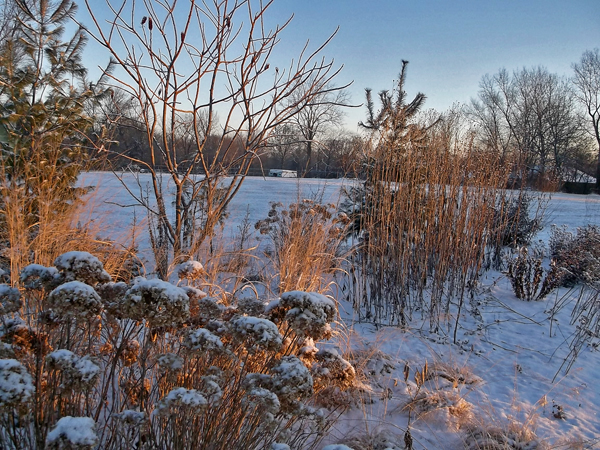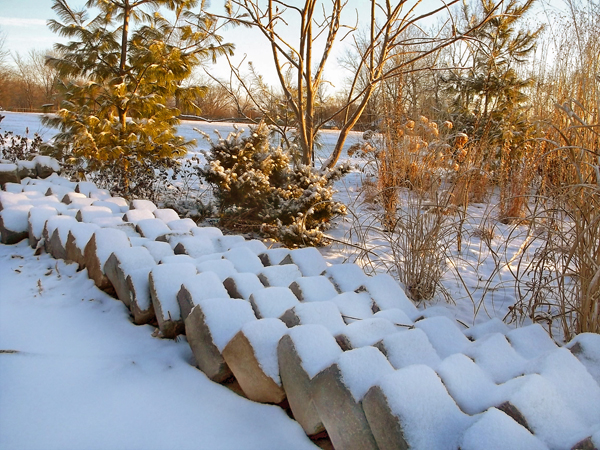 Even as a young boy, that’s me in the photo above in 1976, I enjoyed walking to the nearby forest preserve in Lansing, Illinois. I’d always go with my older brother and/or my dad, sometimes we’d bring a can of pork-n-beans and a few hotdogs to cook over an open fire. Three years later, in 1979, my family moved to Crete, Illinois, to a home surrounded by oak woods and near a small creek. By then, I was old enough to go into the woods on my own, and explore. And explore I did! Last week, while visiting my mother, I decided to take a walk and see what the Skunk Cabbage was looking like – it’s one of the first signs of spring’s arrival, or rather, the close of winter, as it is often seen flowering in February in wet woodland seeps. So I put on my boots and set out for a winter’s hike.
Even as a young boy, that’s me in the photo above in 1976, I enjoyed walking to the nearby forest preserve in Lansing, Illinois. I’d always go with my older brother and/or my dad, sometimes we’d bring a can of pork-n-beans and a few hotdogs to cook over an open fire. Three years later, in 1979, my family moved to Crete, Illinois, to a home surrounded by oak woods and near a small creek. By then, I was old enough to go into the woods on my own, and explore. And explore I did! Last week, while visiting my mother, I decided to take a walk and see what the Skunk Cabbage was looking like – it’s one of the first signs of spring’s arrival, or rather, the close of winter, as it is often seen flowering in February in wet woodland seeps. So I put on my boots and set out for a winter’s hike.
The snow was deeper than I was expecting – at least a foot deep, and deeper in some places, but the sun was out and the temps were in the low 30’s. Maybe I need to invest in some snowshoes. The woods were so pretty with all of the pure white snow covering the ground – not a hint of green on this early March day.
The woods were so pretty with all of the pure white snow covering the ground – not a hint of green on this early March day.  In less than a month, this sandy flood plain (the creek is just off to the left in the picture above) will be covered with spring ephemerals – woodland wildflowers that come up, flower, set seeds, then go dormant by early summer, not to be seen until next spring. On this day’s hike, however, it was all about the snow.
In less than a month, this sandy flood plain (the creek is just off to the left in the picture above) will be covered with spring ephemerals – woodland wildflowers that come up, flower, set seeds, then go dormant by early summer, not to be seen until next spring. On this day’s hike, however, it was all about the snow.  The creek is not that far from the house, maybe 500 feet or so, standing in the floodplain, the house can just be seen in the distance, with its snowy roof.
The creek is not that far from the house, maybe 500 feet or so, standing in the floodplain, the house can just be seen in the distance, with its snowy roof.
 The creek was still covered with ice. As kids, we would go down in winter and ice skate in a wide part dug out by the land owner. Today, there was too much snow covering the ice for that – and I was not brave enough, as an adult, to test the integrity of the ice anyhow. Kids are fearless.
The creek was still covered with ice. As kids, we would go down in winter and ice skate in a wide part dug out by the land owner. Today, there was too much snow covering the ice for that – and I was not brave enough, as an adult, to test the integrity of the ice anyhow. Kids are fearless.  In summer, I’ll sometimes see wood ducks paddling along the creek – they often see me first, however, and fly off, or if I see them first, I’ll stay still – they notice me there anyhow, standing along the shore, keeping a weary eye on me, but still going about their business. On one winter hike, I observed a family of beaver – I watched them work for some time, lying flat on my belly, high on an overlook (shown, two pictures above). Soon enough though, a beaver swam parallel to where I was, looked up and slapped his tail on the water, warning the others of my presence – they all took off for cover. No signs of beaver this year – except remnants of chewed trees from years past.
In summer, I’ll sometimes see wood ducks paddling along the creek – they often see me first, however, and fly off, or if I see them first, I’ll stay still – they notice me there anyhow, standing along the shore, keeping a weary eye on me, but still going about their business. On one winter hike, I observed a family of beaver – I watched them work for some time, lying flat on my belly, high on an overlook (shown, two pictures above). Soon enough though, a beaver swam parallel to where I was, looked up and slapped his tail on the water, warning the others of my presence – they all took off for cover. No signs of beaver this year – except remnants of chewed trees from years past.

 I kept walking to where I used to ice skate long ago – the wide spot is now silted in and overgrown with invasive reeds – Phragmites, which can be seen in the upper right of the photo above. In the lower left of the photo can be seen a hole – one of the few signs of life that I saw on my hike – very few fresh animal tracks to be had that day.
I kept walking to where I used to ice skate long ago – the wide spot is now silted in and overgrown with invasive reeds – Phragmites, which can be seen in the upper right of the photo above. In the lower left of the photo can be seen a hole – one of the few signs of life that I saw on my hike – very few fresh animal tracks to be had that day.  The hole was actually pretty deep – as the snow was deep, about 18 inches, or so. Did the animal that dug this hole sense, or hope for, a meal for all of its effort?
The hole was actually pretty deep – as the snow was deep, about 18 inches, or so. Did the animal that dug this hole sense, or hope for, a meal for all of its effort?  Alas, as I made it down to the area, shown above, that normally would be covered with the hooded flowers of the Skunk Cabbage plant, there was nothing to be seen but a thick cover of snow. I left the snow cover (and the flowers that it hid) undisturbed. But I WILL be back, when the snow is gone, I’ll be back, searching for the first signs of spring.
Alas, as I made it down to the area, shown above, that normally would be covered with the hooded flowers of the Skunk Cabbage plant, there was nothing to be seen but a thick cover of snow. I left the snow cover (and the flowers that it hid) undisturbed. But I WILL be back, when the snow is gone, I’ll be back, searching for the first signs of spring. 







































